Some time ago I was standing beside a drab cement sluice that rerouted what used to be a small creek around a shopping mall in the British Columbia town of Cranbrook. Bill Westover, the region’s longstanding fisheries biologist, was with me. He recalled how he had once fished for cutthroat trout in this used-to-be stream. “Big ones, too,” he sighed. “Just a little bit at a time, this place got carved up and before we knew what happened, it was gone. Then we forgot there’d ever been a creek here.”
He looked at the sluice and then into the distance. “Death by a thousand small cuts,” he mused. “And there doesn’t seem to be a lot we can do about it — not enough Band-Aids.”
Now, over 30 years later, I find myself inundated with stories about these thousand cuts — perhaps now multiplied to tens of thousands, millions. They’re everywhere, converging on a tipping point where the world we’ve come to know is in peril. I am trying to resist being gripped by a kind of enviro-paralysis. It’s depressing. Maybe Bill was right.
But every now and then this story gets flipped on its head. Something pokes through the gloom and changes things. Maybe it’s the return of salmon to the Elwha River after the removal of a couple of dams. Or the repatriation of wild bison to Canadian mountain parks. Or wolves to Yellowstone.
Whenever such stories come my way, I find myself reliving that sluice-side discussion with Bill.
I wish I’d known enough back then to say, “Yeah Bill, but maybe healing by a million wee steps is something worth thinking about. Perhaps that’s a better mantra... at least we’d be doing something.”
But where to start?
For me, in my 70s, it began with walks in the woods that opened in me a part of my mind, my soul, long stowed away and forgotten. That part of us we call our imagination. Our sense of wonder at possibilities sensed but unseen.
Why had it taken so long for me to rediscover this part of me, and what had locked it away?
I’m a retired social scientist. A lifetime ago, I cut my scientific teeth in experimental psychology. This research discipline has always worked incredibly hard to convince itself, and others, that it is a science. A big part of its pitch involves an unflinching commitment to objectivity — to banish all signs of the ghost from the machine; to revel in unbiased knowledge; not to get too involved with the subject matter.
This was ingrained into me as a graduate student. I vividly remember the red ink that decorated the first draft of my thesis proposal telling me to get rid of myself in the presentation and just talk data.
Later, as a professor, I became the one imposing this sterile message on graduate students preparing to be scientists.
Today, I recognize that this constant adherence to the language of “objectivity” had an enduring effect on me. It loomed large in my work, in my home life and as in my view of the world in general. I became reluctant to let my imagination go — I learned to keep it under wraps. And as a result of such neglect, like many aspects of our natural environment, my internal landscape was scarred.
This all began to change when I ceased being a scientific professional, moved to Vancouver Island and eventually found the time to take daily, long walks in the woodlands surrounding Victoria.
I remember like it was yesterday. Early June, after a dull, wet spring that felt like it would never end. A heavy mist hung just above the fir trees reminding me of what had seemed like interminable months of rain and overcast skies. While the leaves had arrived, albeit reluctantly, there was this sense that nature had stalled. Nothing seemed to be on the move — we were stuck in a rut that prevented summer from making its presence felt. The air was harsh on my face as I moved into the trees.
My mood mirrored the featureless and seemingly suspended world around me. I trudged into the woods more out of habit than any intense desire to be there.
But then everything changed.
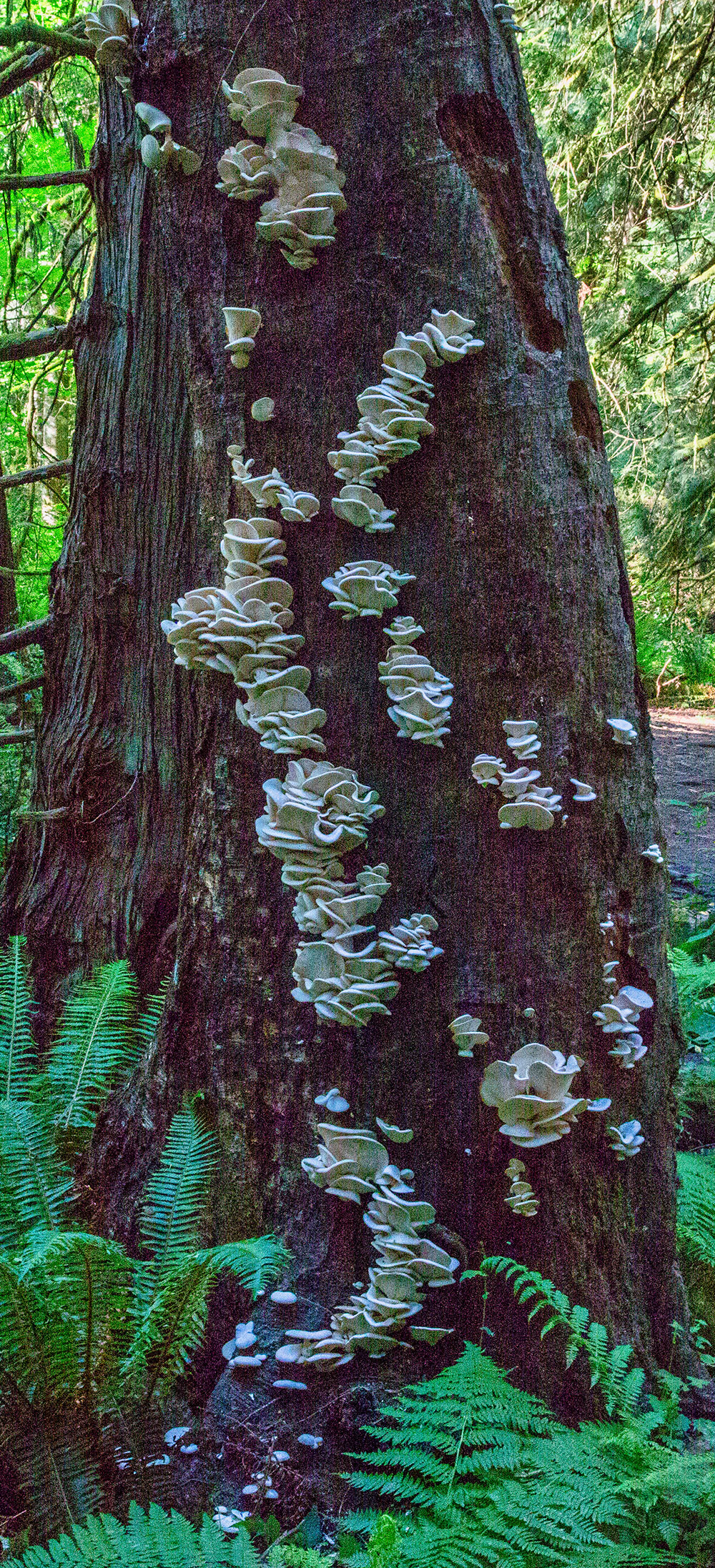
Coming around a curve in the trail I encountered an old tree smattered with white shapes curling their way seductively up the trunk. They sketched alluring lines upwards, immediately catching my eye. I stopped in my tracks. Totally unexpected, these intricate forms punched a hole in my gloom.
My mood lightened to see such exuberant life. I smiled, probably laughed out loud, as I finally recognized this delightful growth of mushrooms artistically decorating the tree. I ran home to get my camera.
Excitement welled up as I set my tripod — such unanticipated beauty, such a wonder of nature. I revelled in how each of the individual shelves that made up the larger shapes was, itself, a work of art — a soft white edge, seeming to wander at random, framing an incredible array of parallel forms, gills, that generated a vibrant sense of design and movement.
Their glorious abundance was stunning. The intricate designs of the gills framed a vision of “nature the great artist,” casting lines and shapes in what could only be thought of as systematic randomness, like a priceless etching. What a masterpiece!
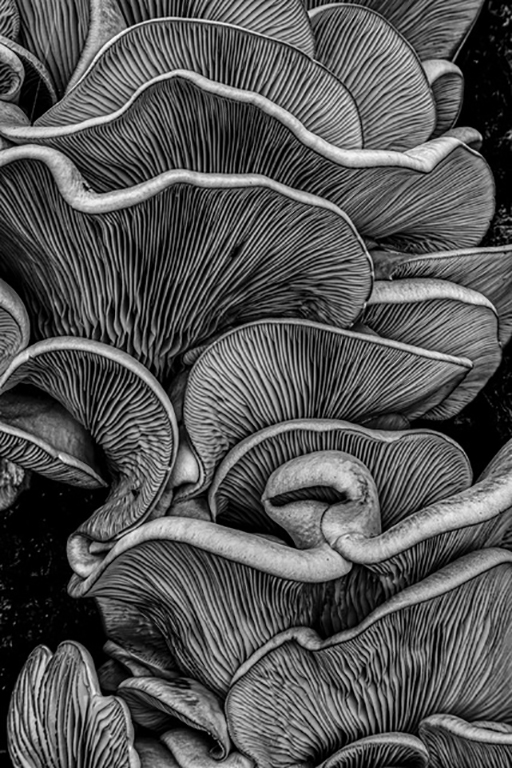
This was a watershed moment. Sure, I’d been aware of mushrooms for years, even knew some of their names. But the sheer wonder of this unexpected scene had a great impact. My woods walks changed. Now I walked in eager anticipation of another spectacle around the next corner.
All the light we cannot see
I challenged myself to come to know some of the subtleties of the amazing ecosystems of the Pacific Northwest rainforest — particularly the hidden fungal life that spawned these beauties. Little did I know that I was on the cusp of an amazing voyage of reawakening, one that would have me tramping through the woods virtually every day of the year.
Soon I was scouring whatever books I could find to try to understand some of the secrets underlying these amazing fungi. I was on what they call a “quiet hunt” searching for mushrooms — not to fill up a basket for the dining table — but to fill up my mind with whatever shapes, designs and knowledge nature was willing to make available.
But I soon encountered a particularly perplexing problem. These life forms do their best to keep themselves hidden from us humans. While occasionally fungi do show off as mushrooms, the vast majority of the time they live where we can’t see them — underground or perhaps inside dead trees. Not only that, the vegetative fibres that make up these underground mycelia are quite fine, almost microscopic, so even if I wanted to dig them up, they’d still be hard to see.
Because fungi are so reluctant to show themselves, it’s easy to get fooled into thinking they aren’t particularly abundant or that important. But we’d be wrong.
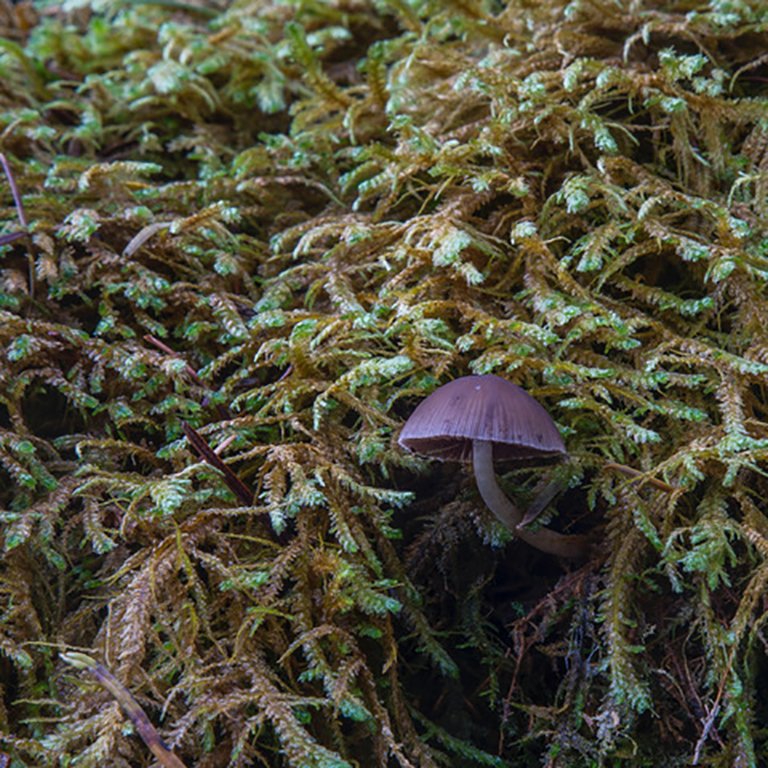
An unseen presence, everywhere
Conservative estimates indicate there are somewhere between 2.2 and 3.8 million species of fungi on Earth, dwarfing the plant and animal kingdoms in terms of diversity. Their underground world is huge. For example, it’s estimated that between one-fifth and one-tenth of the biomass in the soil of a Douglas fir forest, like the one I walk every day, is made up of fungal mycelia. That’s a lot of hair-thin fibres.
The largest living organism on the planet, the “humongous fungus,” lives not far south of here in the Malheur National Forest of eastern Oregon. It’s estimated to cover 965 hectares, weigh more than 11,000 kilograms and be 2,400 years old.
The functioning of our world depends on the decomposing capacities of some fungi. And the emerging view of the forest as a networked community is founded on the presence of fungi that enter into symbiotic relationships with all kinds of plants and trees.
And so fungi are the physical instantiation of the idea of ecological connectivity. Without a doubt, they are immensely important to sustaining life.
But they are largely invisible, and that turned out to be quite a challenge. How could I honour and more deeply appreciate the importance of these organisms if I couldn’t see them and make them concrete and observable? How could I know them better without directly experiencing their presence?
As I tromped about in the local woods, I slowly began to conjure imaginary images of the fungal mycelium in my mind.
I visualized the complex network of thread-like fibres running beneath the ground, the web-like net infiltrating the many fallen logs I was passing. Sometimes, in my dreaming mind, I’d get the feeling I was walking over a gossamer bridge — the trail being the bridge’s deck, the mycelium being what’s holding it up. These made-up images created a sense of contact with the elusive mycelium, changing it from the abstract, invisible entity I’d read about into an alive presence. This increased my passion and caring, dare I say love, for not only the fungi here but also for the wondrous woodlands which I’m fortunate enough to visit each day.
Please don’t read this essay as a rejection of the scientific method or the importance of striving for a fact-based understanding of our existences. Much of what I have said about fungal mycelia is drawn, after all, from the hard-won findings of myriad researchers.
No, my intent is to remind that science, at any level, must be infused with imagination. That staking the measure of our world is a creative, intuitive enterprise at its heart. And that we do no service to young scientists if we cause them to feel embarrassed about engaging in flights of fancy like my dreaming of the vast, intertwined realm living below my feet in a forest. A sense of wonder and emotional connection sustain the emergence of new and innovative research.
When we get our knees wet, our hands dirty, our senses full, we should not distrust that delivered jolt to our nervous systems. We should embrace it as a reminder that each of us carries within us internal landscapes, some much hidden, some quite blighted, waiting to be revitalized.
By looking within and embracing what is mysterious as well as what is plainly there, we can better see the glories of the natural world. And then we are better able to lend our energies to healing this Earth by a million wee steps. ![]()
Read more: Science + Tech, Environment


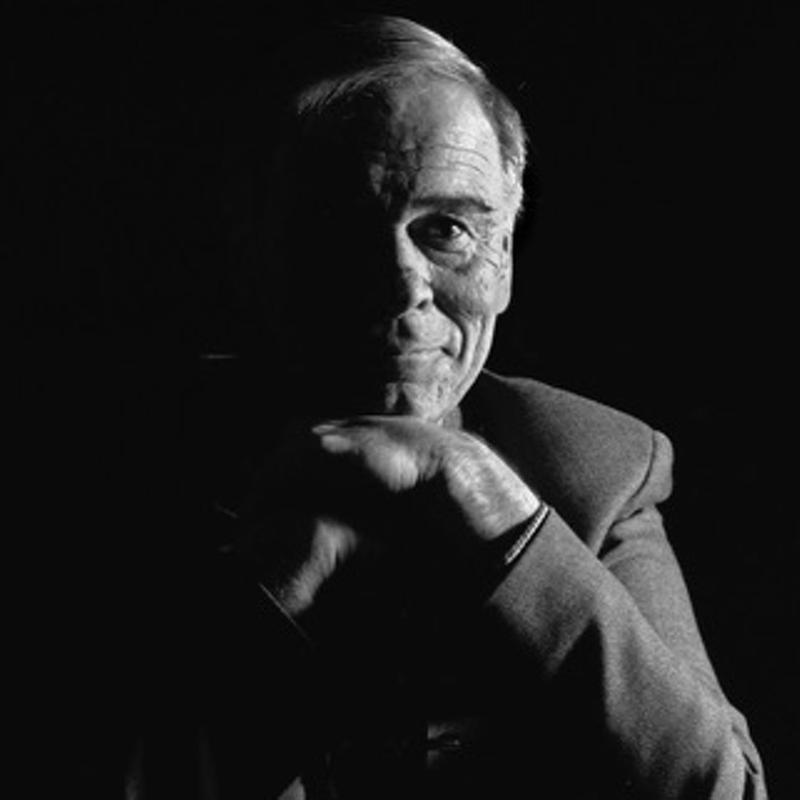

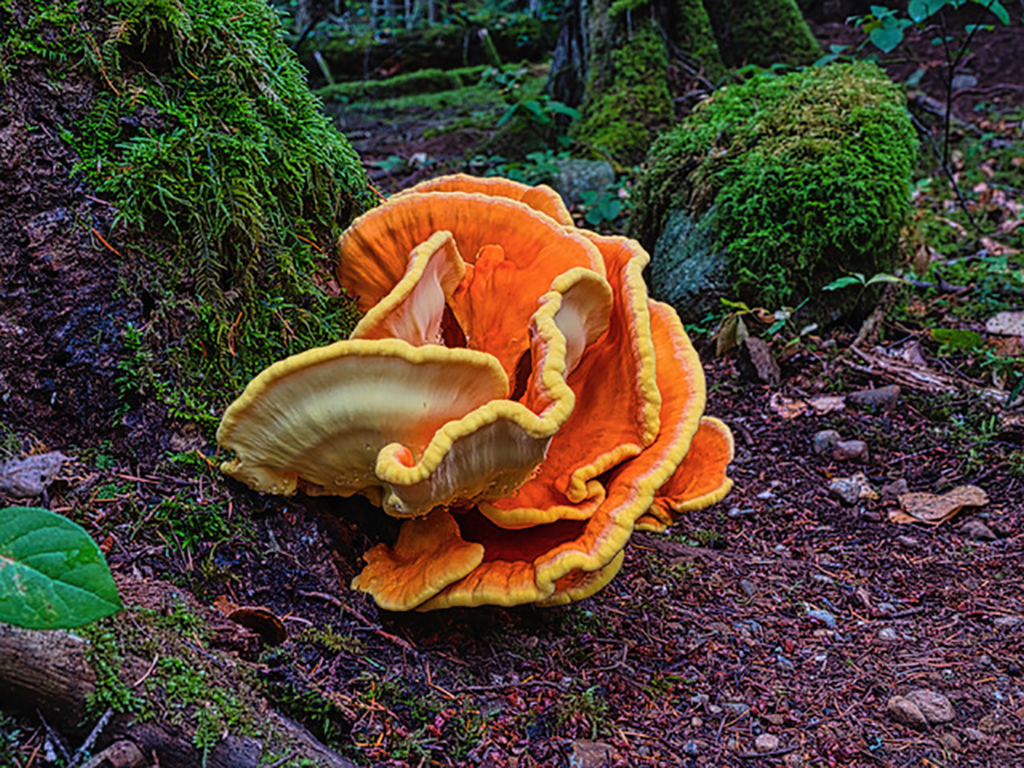












Tyee Commenting Guidelines
Comments that violate guidelines risk being deleted, and violations may result in a temporary or permanent user ban. Maintain the spirit of good conversation to stay in the discussion.
*Please note The Tyee is not a forum for spreading misinformation about COVID-19, denying its existence or minimizing its risk to public health.
Do:
Do not: